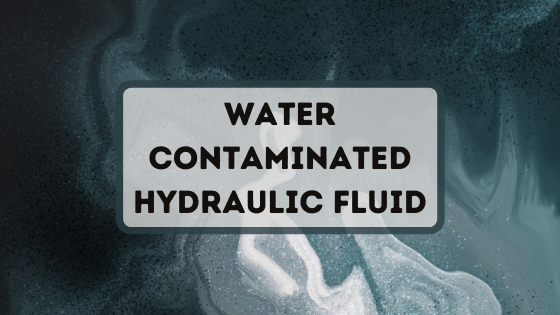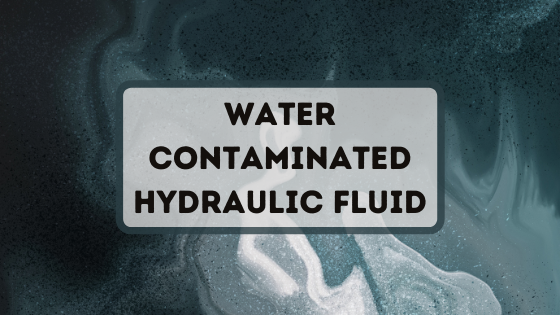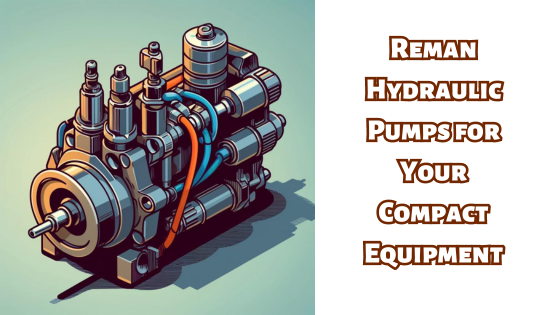Water Contaminated Hydraulic Fluid
Posted by Jim Strong on Sep 26th 2021
Did you know that water is one of the most common forms of hydraulic contamination? And certain amounts of water in your hydraulic fluid aren't a problem--until your fluid looks cloudy.

Here are a few other Shop Talk Blog posts you might find interesting:
- Cleaning Up A Final Drive Or Track Motor
- When Final Drive Bearings Go Bad
- Repairing A Final Drive Motor [VIDEOS]
When Water Becomes a Problem
If your hydraulic fluid is mineral-based, then you can up to 200 - 300 ppm (parts per million) of water present without an issue. Once it gets over that, however, is when the water becomes problematic. For synthetic hydraulic fluid, your safe until you reach 1,000 ppm. So, for mineral-based hydraulic oil you can have up to 0.03% water and for synthetic hydraulic oil you can have 0.1% water. And, as it turns out, the problematic levels of water also correspond to when your hydraulic fluid looks cloudy.
Problems Related to Water Contamination
What happens when the water level exceeds that safe range? Here's a list of what can happen, in no specific order:
- Increases the elasticity of your hydraulic fluid, impacting performance
- Lubricants may no longer be able to protect critical surfaces, leading to corrosion and accelerated wear
- Hydraulic fluid will be more difficult to filter and can clog the filters
- If temps drop below freezing, water crystals can form and damage parts (e.g., valves)
- It's easier for air to be entrained in the hydraulic fluid, leading to issues with cavitation
- Hydraulic fluid additives can be impacted which can lead to the formation of acids, corrosive by-products, and sludge
- Rust can start forming
How Water Contamination Affects Your Final Drives
We just talked about the problems that water contamination causes, so lets take a look at how those problems can affect your final drive motor. One of them is cavitation, which leads to irreparable damage to critical surfaces and reduces the performance of your drive motors. An increase in elasticity can reduce the torque on your drive motor, making it seem weaker or take longer to handle more intense jobs (e.g., going uphill, moving with a heavy load). Corrosion and rust is something you never want inside your final drive, while sludges can start clogging important clearances. And you never want parts like the rotator group and bearings to wear out prematurely.
Where Does the Water Come From?
One way water can enter your hydraulic system is through the hydraulic fluid itself. Water and moisture can make its way into hydraulic fluid during manufacturing, processes, and storage. The most common of these is storage, even when the fluid is stored in a waterproof container. Some plastic containers can actually breathe in moisture when there are large changes in temperature.
In addition, when hydraulic fluid containers are stored outside they may end up with water caught near the opening. When that happens, you can end up adding water to your hydraulic system at the same time you add fluid. And you shouldn't leave hydraulic fluid containers open when you aren't using them.
Another potential source of water is leaking seals or lines that are exposed to extremely humid conditions or water. That's just another reason why leaks should also be fixed right away: if fluid can leak out, other things can get in. And anytime you open up the hydraulic system water can be absorbed from the atmosphere if it is extremely humid. For example, if ports that aren't closed during repair can allow moisture inside your system.
Dealing With and Preventing Water Contamination
Parker Filtration has a really good article on the subject dealing with water in your hydraulic fluid. In the article, they suggest three ways to remove water:
- Headspace flush, also known as dehumidification
- Vacuum distillation
- Polymeric filters
Of these solutions, polymeric filters are the simplest: they absorb water from the fluid that passes through them.
There are some easy ways to prevent water contamination, as well:
- Keep hydraulic fluid containers closed when they aren't being used
- Store all hydraulic fluid temperature-controlled atmosphere
- Don't allow water to collect on the top of hydraulic fluid storage containers
- Keeps ports closed when you're performing repairs
Conclusion
Any kind of contamination is bad for your final drive motor, and water is not exception. We encourage everyone to be careful about how you store hydraulic fluid! And if you ever have questions about your final drives, feel free to send us an email to sales at woodlandfp.com or give us a call at 877-330-7477.








